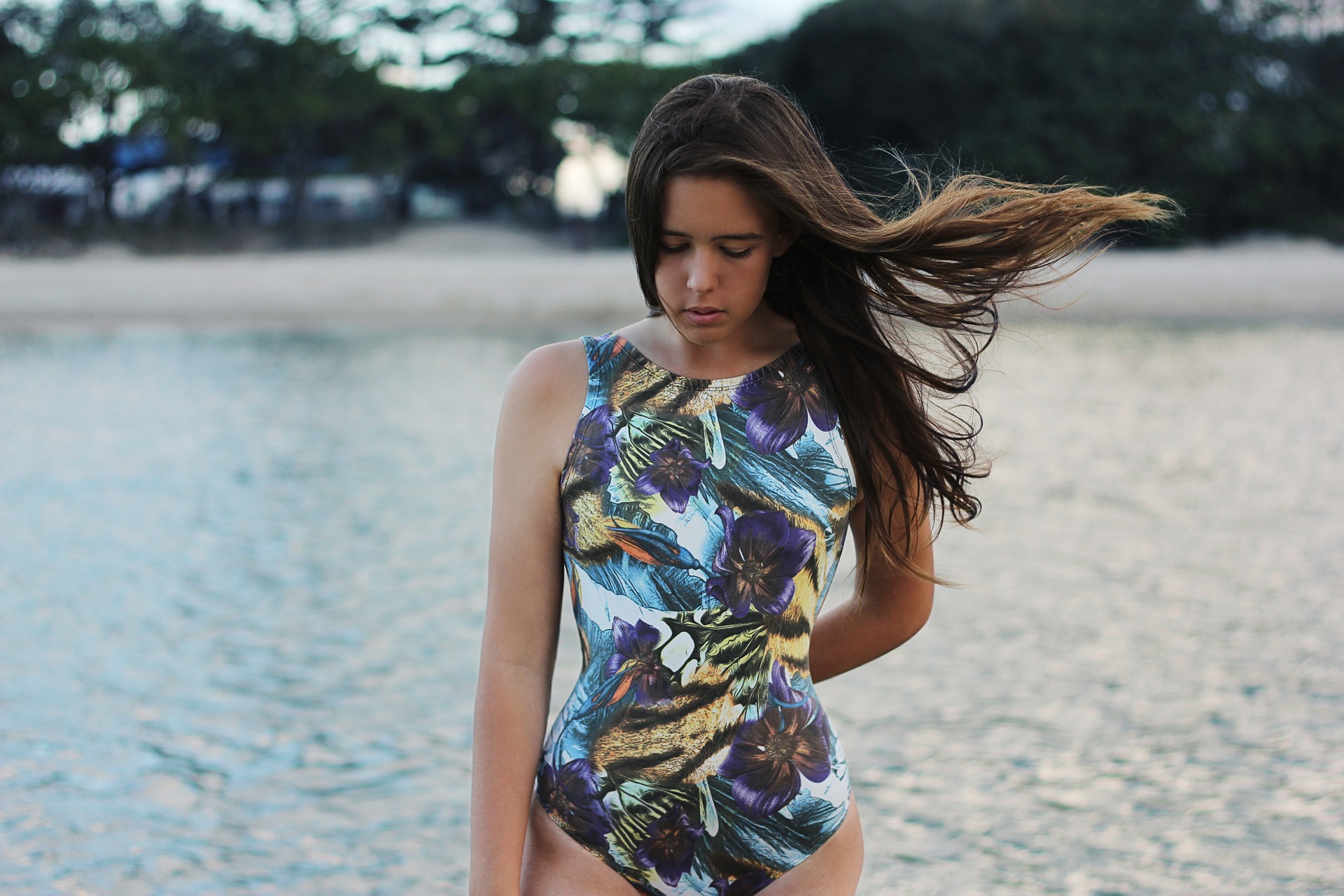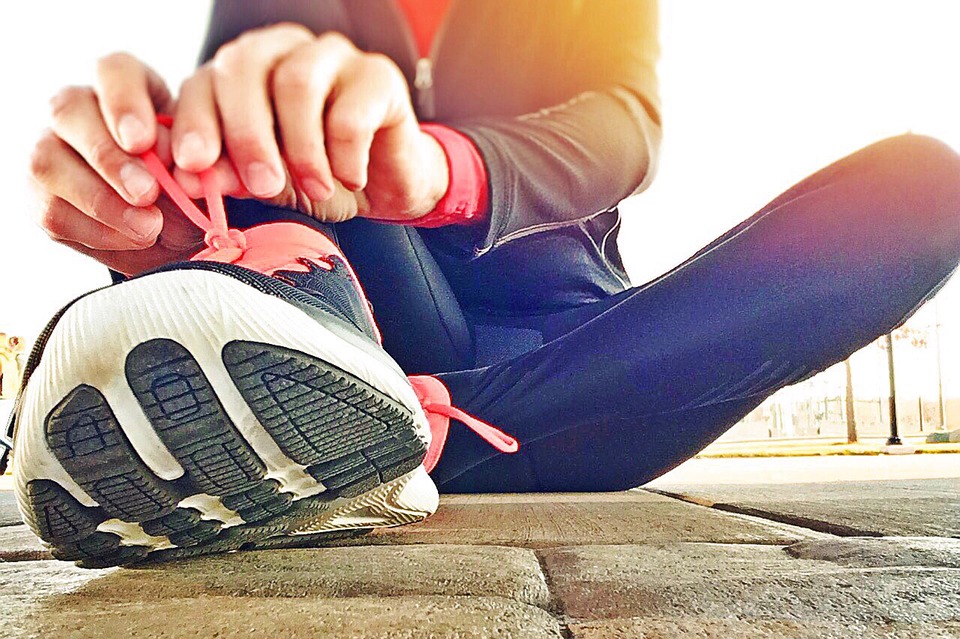Can you cut 1 Tonne of carbon pollution out of your life?
Take the challengeThis is a 1 Million Women community guest post from cosmetic chemist Daphne Kapetas. The research undertaken and opinions expressed by the guest writer/blogger and those providing comments are theirs alone.
Plastic microbeads commonly found in facial scrubs have gained notoriety over the last year. They wash down the drain, into our oceans and are eaten up the food chain of our marine life. Campaigns like #BanTheBead, along with high-level policy change are rolling out across world to make these micro-plastics illegal. But synthetic fabric that enters our water streams through the act of washing your clothes might be more of a problem than plastic beauty beads. Guest blogger Daphne Kapetas explains…
I must confess, lycra I love you!
All the activities that I am most passionate about, have a common thread…. lycra!
My dancewear, swimwear, gymwear … or should I say, 'active wear', all contain this synthetic man-made fiber. What would I do with out the exceptional elasticity and durability that Lycra provides?
Lycra is a synthetic, man-made fiber. Lycra is stronger and more durable than natural rubber. It is a polyester-polyurethan copolymer that was invented in 1958. Other commonly known synthetic fibers include, Elastane, Polyester, Polyamide, Nylon, Viscose and let's not forget the very loved and now infamous… Spandex!

Today, three quarters of the clothing we wear is made from synthetic fibers. These fibers have changed the face of the clothing industry.
But unfortunately these synthetic fibers have also changed the diet of our marine life!
How does what we wear affect our marine life?
Like we shed our skin, the fibers from the fabric that our clothing is made from, also shed fibers. When we so innocently place our dirty laundry into our washing machines, tiny synthetic fibers from our clothing begin a journey themselves. These tiny fibers range from just 1mm to 7 micromillimetres in size.
The water that is expelled from our washing machine acts as a carrier for the tiny synthetic fibers escaping through our plumbing and sewerage systems.
Because these fibers are so small they pass through the filtering systems of our washing machines and even our sewerage treatment plants and then reach our rivers, lakes and oceans.
Where do the microfibers end up?
Plastics are entering the world's oceans at an alarming rate. It is estimated that there are at least five trillion plastic pieces on the surface of the oceans with eight million tonnes of plastics leaking into the ocean every day—that is the equivalent of one garbage truck of plastic every minute of every day of the year.
Scientists have looked inside the stomachs of different fish from lakes and oceans around the world and have found plastic in 1 out of every 4 seafood items sampled.
Plastic is like a sponge and attracts other chemicals. Copper, lead, cadmium and nickel are all absorbed by plastic and so are pesticides, flame retardants and other industrial chemicals. These chemicals cause great damage to the natural environment due to toxic overload and their accumulation in the marine food chain.
These tiny bits of plastic that are found in marine debris, are not coming from microbeads, but rather from microfibers from our clothing.
The poster child of sustainability is the eco fleece, the anorak that has been manufactured from recycled plastic. However, these eco fleeces shed almost two thousand plastic fibers per wash, which is a whole lot worse that other fabrics that are made from non-recycled material.

Some of the findings from scientific research include:
- 1 in 4 fish samples contain microfibers
- Microfibers penetrate the stomachs of mussels, get trapped in their muscles and even enter their blood circulation. The body of the mussel then starts to attack the foreign microfibers, resulting in scar tissue.
- A lot of these chemicals are fat loving and water hating. They are persistent and end up in the liver causing toxic over load.
- Microfibers negatively impact the reproduction cycle of worms, which not only impacts their survival, but the whole marine food chain.
- 30% of mullet have plastic in their gut
- 13% of bream have plastic
- It is estimated that one third of the food we eat today is contaminated with microfibers
Fabric partnered with more chemicals
The microfibers are often infused with other chemicals including dyes and Triclosan. Triclosan, (my pet hate) is a chemical that is added to hand and body washes, in order for them to claim 'antibacterial' properties. Would you believe that it is also added to plastic? Not only does Triclosan strip good bacteria from our skin, it also ends up in our waterways where it kills our marine life, like worms.
Worms? Yes, worms are critical as they are a source of food for other organisms and their destruction negatively impacts the complex marine food web.
Dr Chelsea Rockman from the University of California, has found chemicals such as DETs (banned in the early1970s) and PCBs (banned in the early 1980s) in every single piece of plastic that she has collected from the ocean.
In the textile industry, fabrics have historically not had a life-cycle analysis done in order to determine their impacts on our environment, ecology or even human health. Scientific research proving that these fabrics are in fact safe, is up and until now unavailable.
What type of plastic is most commonly found in marine debris?
Plastic bags?
Plastic wrappers?
When you ask people this question, these are the answers you get and they are Wrong!
Over 60% of the plastic debris found in the marine environment are from microfibers from our clothing. In fact, 85% of the human-made materials found on the shoreline were microfibers that matched a variety of clothing material, such as nylon and acrylic.
The pollution is worst near urban areas, but it is a global issue and has increased by over 450% since the 1960s. (2)
Professor Mark Browne from the University of New South Wales first discovered the issue of microfibers in the ocean in 2011. He and his team analysed seawater samples taken from both poles and the Equator between 2004 and 2007. They discovered plastic sourced from microfibers was six times greater than the plastic from other sources, like bottles, bags and wrappers.
Apparel companies turn 70 million metric tons of fibers into 400 billion square meters of fabric, to make around 150 billion items of clothing per year.
400 billion square meters of fabric is enough to nearly cover the state of California …Or half the state of New South Wales.
150 billion items of clothing is enough to provide 20 new articles of clothing for every person on the planet.
Now that is an awful lot of clothing microfibers escaping into our oceans.

Next Steps
Currently, our sewerage treatment plants struggle with keeping raw sewage at bay on days of heavy rain and they most definitely do not have a filtering system that would be required to keep those microfibers from entering our waterways.
The Benign by Design program is a partnership between the University of New South Wales in Australia, the University of California, North Western University and the clothing designer Eileen Fisher.
The Benign by Design program focuses on products that are found in the environment as debris. This program aims to scientifically measure the impact of washing apparel with specific filters, investigate how toxins can be controlled and to finally answer the question of which is less damaging to the environment, natural or plastic fibers. The Benign by Design program traces both the emissions and impacts of fibers over their life cycle, with a clear goal to design fabrics that are sustainable. Once a better understanding is gained, scientists can then work with companies to find cost-effective ways to remove those problematic features. Companies need to fund scientific research to determine how we can reduce the negative impact of microfibers on our environment and our health.
Scientific research is required by:
- Clothing manufacturers to examine how much shedding of fabrics is occurring and how to reduce/eliminate shedding.
- Washing machine manufacturers need to improve their filtering systems in their products.
- Governments and Councils need to address filter inefficiencies in our water treatment plants.
The outcome of scientific research provides companies, industry and individuals with opportunities for growth and innovation.
Opportunities for innovation:
- Designing better textiles that are more durable and do not emit microfibers.
- Building better filtering systems for washing machines
- Building better wastewater treatment plants which may reduce the amount of plastic entering our waterways.
Both the clothing and the washing machine appliance industries need to work with scientists and the government collaboratively in order to find a solution. For starters, a simple filter on the washing machine would be helpful in assisting to stop the escape of microfibers.
What can we do?
Go nude!
Just kidding … the goal here is for all of us to become more aware, to learn something new each day. The more aware we are as consumers, the more we can demand accountability from organisations, councils, governments and industry players.
As consumers and tax payers we can demand that the appliance and clothing industry, the government and local councils take this problem seriously and fund research.
This research would then determine what options we can take to reduce the impacts from clothing fibers. This is an example where government mandated proof-of-harm policies are necessary. Companies need to prove that their products do not negatively impact human and ecological health.
With one strong, respectful voice, we can all make a difference. The ultimate power lies within each one of us. Together we can help raise awareness and the much needed funds for further scientific research.
So now my addiction to Lycra does not seem so innocent after all.
* * * * *
Daphne Kapetas is a qualified and experienced cosmetic chemist and marketer with a passion for sustainability and the dance floor. Having worked in the beauty industry with multinationals from, 'concept, product development to product launch,' for 16 years, she is an authority on all things cosmetic. Keep up with her at her website Daphne K Knows
READ THIS NEXT: Nigeria's plastic bottle homes empowering residents
Images: Pixabay
1 Million Women is more than our name, it's our goal! We're building a movement of strong, inspirational women acting on climate change by leading low-carbon lives. To make sure that our message has an impact, we need more women adding their voice. We need to be louder. Joining us online means your voice and actions can be counted. We need you.
References and further reading on this topic
1. Associate Professor Mark Osborn, Submission . The New Plastic Economy:Rethinking the future of plastics. [Online] January 2016. [Cited: May 28, 2016.] http://www3.weforum.org/docs/WEF_The_New_Plastics_.... Submission 16, pg1.
2. Browne, Mark Anthony. What comes out in the wash. Sunday Review. [Online] November 28, 2015. [Cited: April 4, 2016.] http://www.nytimes.com/2015/11/29/opinion/sunday/w... .
3. Environment and Communications References Committee . Parliament of Australia . [Online] April 2016. [Cited: June 4, 2016.] http://www.aph.gov.au/Parliamentary_Business/Commi.... ISBN 978-1-76010-400-9 .
4. Catalyst, ABCTV. Microplastic. Catalyst. March 15, 2016.
5. Ward, Tim. Five questions for Dr. Chelsea Rochman about Plastic in our Seas and Seafood. [Online] January 20, 2016. [Cited: Apri 4, 2016.]
6. Randolph Kirchain and Elsa Olivetti Materials Systems Laboratory | Massachusetts Institute of Technology | Cambridge, MA . Material Patterns Considering the Economic,Environmental,and Social Impacts of the Global Textile Industry. [Online] [Cited: April 26, 2016.] http://www.launch.org/sites/default/files/Material....
7. Synthetic clothes may be polluting San Francisco Bay. ABC 7 News. [Online] November 17, 2015. [Cited: May 14, 2016.] http://abc7news.com/food/synthetic-clothes-may-be-....
8. Oceans of Plastic. ABC Radio National. [Online] August 29, 2015. [Cited: May 14, 2016.] http://www.abc.net.au/radionational/programs/offtr....
9. Mary Catherine O'Connor. Inside the lonely fight against the biggest environmental problem you've never heard of . The Guardian. [Online] October 28, 2014. [Cited: May 16, 2016.] http://www.theguardian.com/sustainable-business/20....
Special thanks to:
Heidi Taylor from Tangaroa Blue Foundation
Australian Marine Debris Initiative
Dr Mark Browne University of New South Wales.
